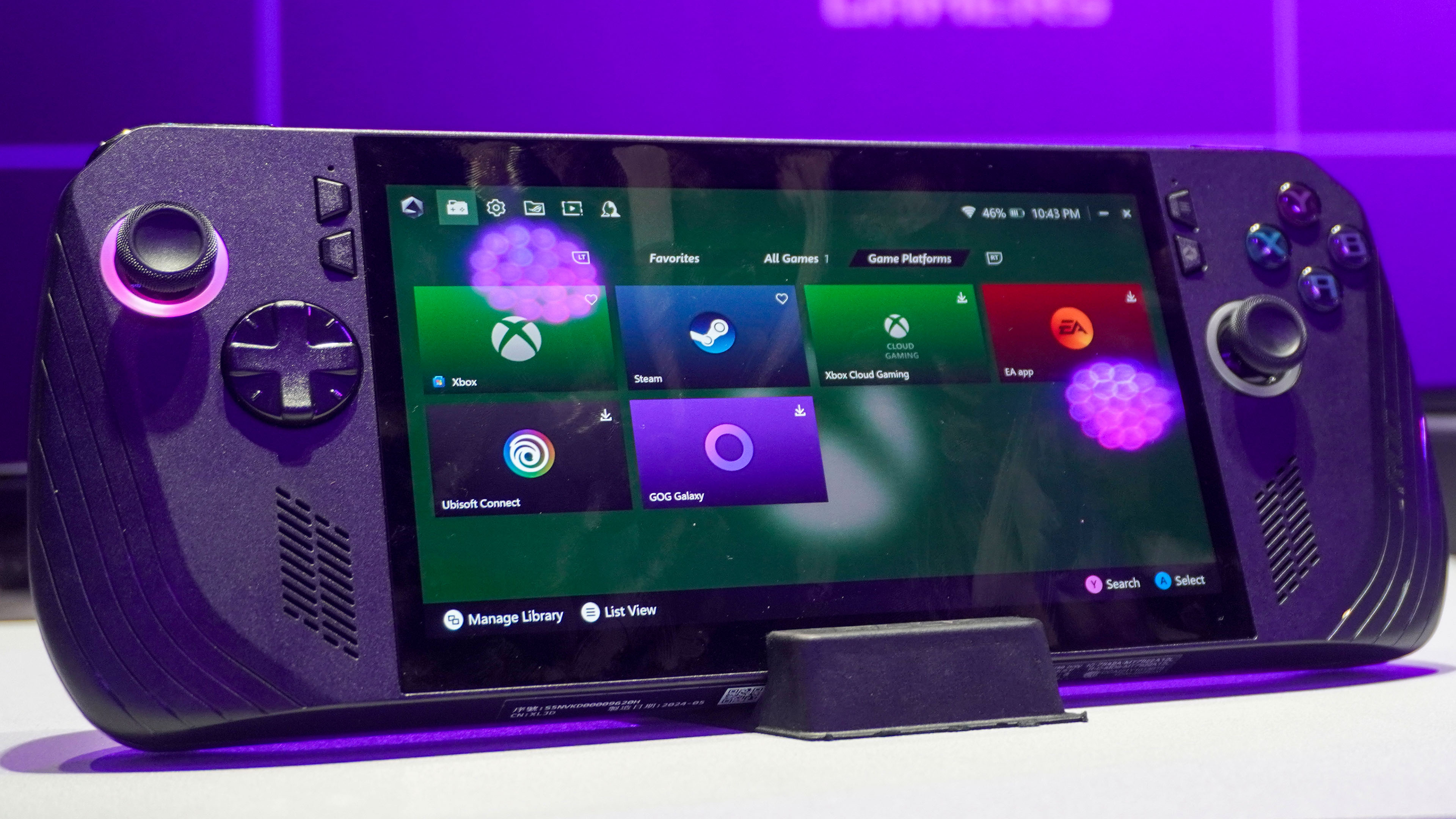
The Asus ROG Ally X has the potential to be the ultimate Windows 11 gaming handheld. Its predecessor, the Asus ROG Ally, is one of the best handheld gaming consoles I’ve reviewed and I expect great things from this update machine. And I’m not just speaking hypothetically as I’ve had a chance to go hands-on with Asus’ device. So far, I'm impressed.
What’s so special about the ROG Ally X? After all, it features the same AMD Ryzen Z1 Extreme chip and 1080p ISP display as the original. While that’s true, its new ergonomic design, bigger battery, larger storage capacity and additional memory make the handheld more enticing than its predecessor — even if those upgrades bump the price to a hefty $799. And while that’s not cheap, I think it’s money well spent, especially if you’re a dedicated handheld gamer looking for a Steam Deck OLED alternative.
Our full review of the Asus ROG Ally X will go live soon. For now, here’s what I think of the handheld and what you can expect from it at launch.
Improved design

The ROG Ally X isn’t just a black version of the original, as Asus has introduced several design tweaks to make it more ergonomic and user-friendly.
Let’s talk about weight since that’s the main difference you’ll notice when holding this device. I weighed both ROG Ally models at our office and found that the new handheld weighs 1.5 pounds compared to 1.3 pounds for the older system. While the ROG Ally X is a bit heftier, its smart weight distribution prevents it from feeling like you’re holding a brick.
Another redesign choice I find interesting is port placement and selection. The original Ally had (in order from left to right) a headphone jack, a micro SD slot, an ROG XG Mobile Interface port, a lone USB-C port, a volume rocker and a power button. The Ally X now has (from left to right) two USB-C ports, a volume rocker, a micro SD slot, a headphone jack and a power button.
The main difference with ports is that there’s no longer a slot for the ROG XG mobile, which is the company’s external GPU dock. Considering how that device costs $2,000, I doubt many Ally owners had one (or intended to buy it). Ditching the XG mobile port to have an additional USB-C port instead was a smart move.
The four face buttons, four shoulder buttons, and two analog sticks feel almost identical to the original Ally. The redesigned d-pad, featuring more pronounced up, down, left and right, is slightly larger and easier to use. I wasn’t a fan of the original’s back buttons, and I’m sad to report that the smaller buttons on the Ally X aren’t any better. They work fine, even if they are just little knobs at best.
Little nitpicks aside, I’m mostly pleased with the ROG Ally X’s design.
A bigger battery

The ROG Ally’s extra weight comes from its battery, which is doubled from 40Wh to 80Wh. In our testing, the original ROG Ally lasted for 1 hour and 43 minutes at 15W. Asus says the Ally X has double the battery life. If that’s true, then this system should last for nearly 3 hours at 15W. Of course, we’ll know for sure once we’ve run the ROG Ally X through our battery test.
On a related note, I noticed that the ROG Ally X isn’t as noisy as the original model. I’m not sure if this is due to an internal redesign with improved heat dissipation or if the new battery is simply more efficient. Whatever the case, it’s nice not to hear noisy fans when gaming. I’ll need to play with the Ally X for longer periods to see if its fans remain quiet, but considering the original gets loud seconds after you turn it on, the improvement is noticeable.
Again, we’ll have a full report on the Ally X’s battery life in our review. But if we can get a solid 3 hours of game time from this machine, that would be a huge deal.
Potentially better performance
The ROG Ally featured good performance, with most games I tested running around 35 to 45 frames per second at medium settings and 1080p resolution. Of course, games ran at higher frame rates, typically in the upper 50s and lower 60s at 720p resolution. Given that the ROG Ally X features the same Ryzen Z1 Extreme chip as the original, don't expect a major performance boost. However, you might still notice some improvement.
I tested Doom Eternal and saw around a 5 fps increase at both 720p and 1080p. The bigger battery, 24GB of RAM (versus 16GB) and better faster SSD likely account for this. That's anecdotal and isn't indicative of what our gaming benchmark tests will reveal, but it's promising regardless.
Even if the ROG Ally doesn’t offer significant performance gains, any extra little bit helps.
Outlook
Though I prefer the Steam Deck due to its intuitive interface and better game optimization, I’ve always been a fan of the Asus ROG Ally. Sure, Windows 11 can sometimes get in the way of the experience, but Asus’ machine set a decent standard for similar Windows handhelds to follow. Its successor should maintain that precedent given its improvements.
Be on the lookout for our full Asus ROG Ally X review.







